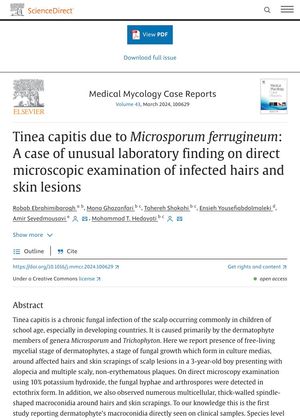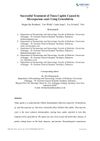Tinea Captitis Due to Microsporum Ferrugineum: A Case of Unusual Laboratory Finding on Direct Microscopic Examination of Infected Hairs and Skin Lesions
February 2024
in “
Medical mycology case reports
”

TLDR Unusual fungal structures were found in a boy's scalp infection, successfully treated with medication.
This case report describes a 3-year-old boy with tinea capitis caused by Microsporum ferrugineum, presenting with alopecia and scaly plaques. Unusually, direct microscopic examination of the infected hairs and skin lesions revealed spindle-shaped macroconidia, typically seen only in culture media. This is the first report of such macroconidia in clinical samples. The infection was successfully treated with oral itraconazole and topical ketoconazole shampoo. The study suggests that macroconidia may appear in clinical samples due to environmental contamination or the influence of corticosteroids.
